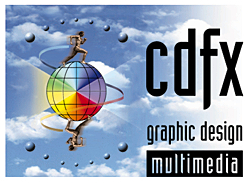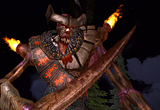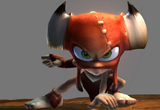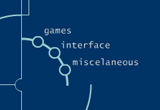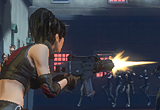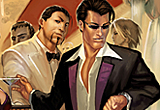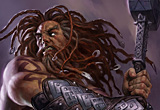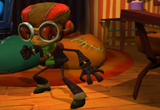Mythica – the Product
A Warriors Dreams
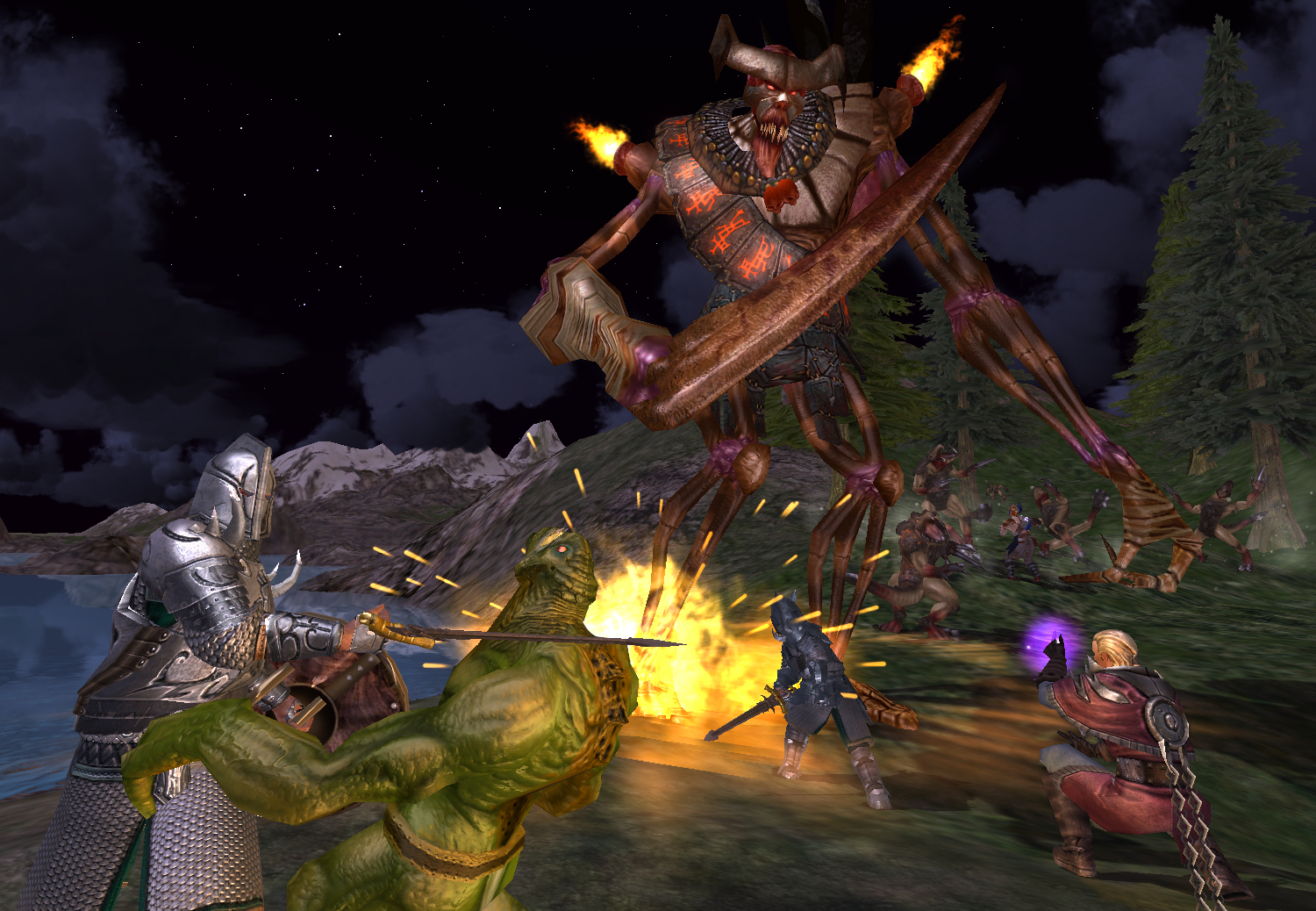
Group combat in Mythica, circa 2003.
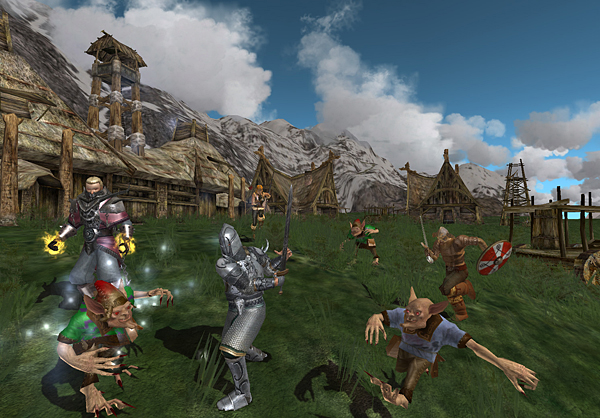
Midgard outpost besieged by Hulderfolke
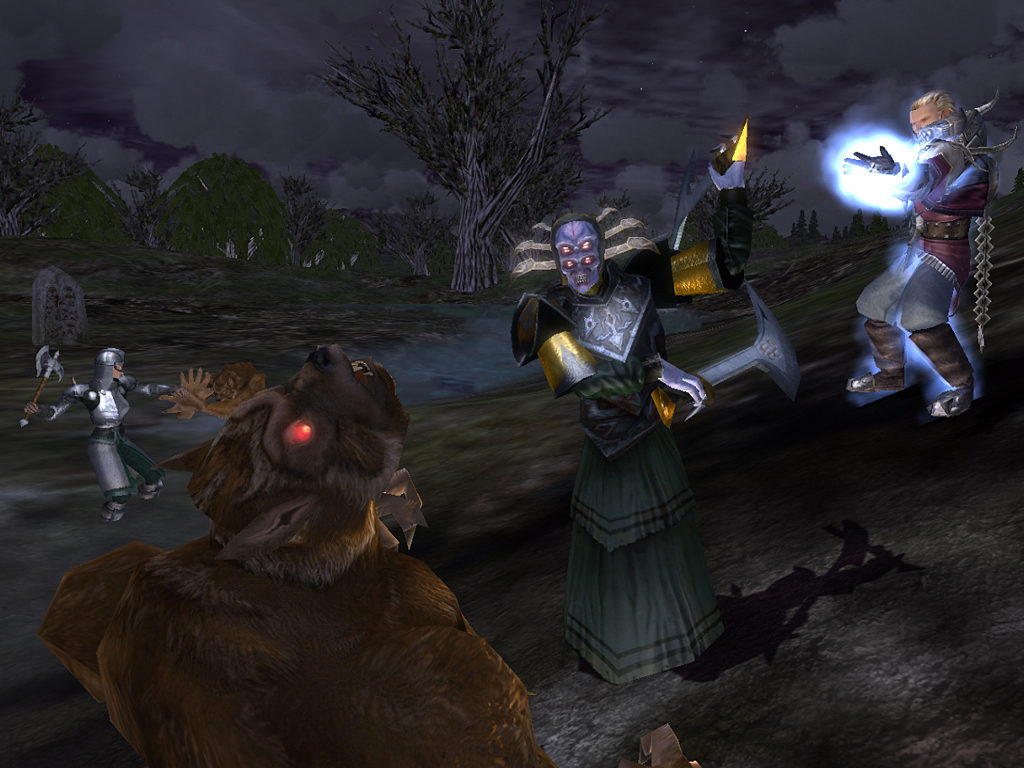
A good look at the Demonologist in action
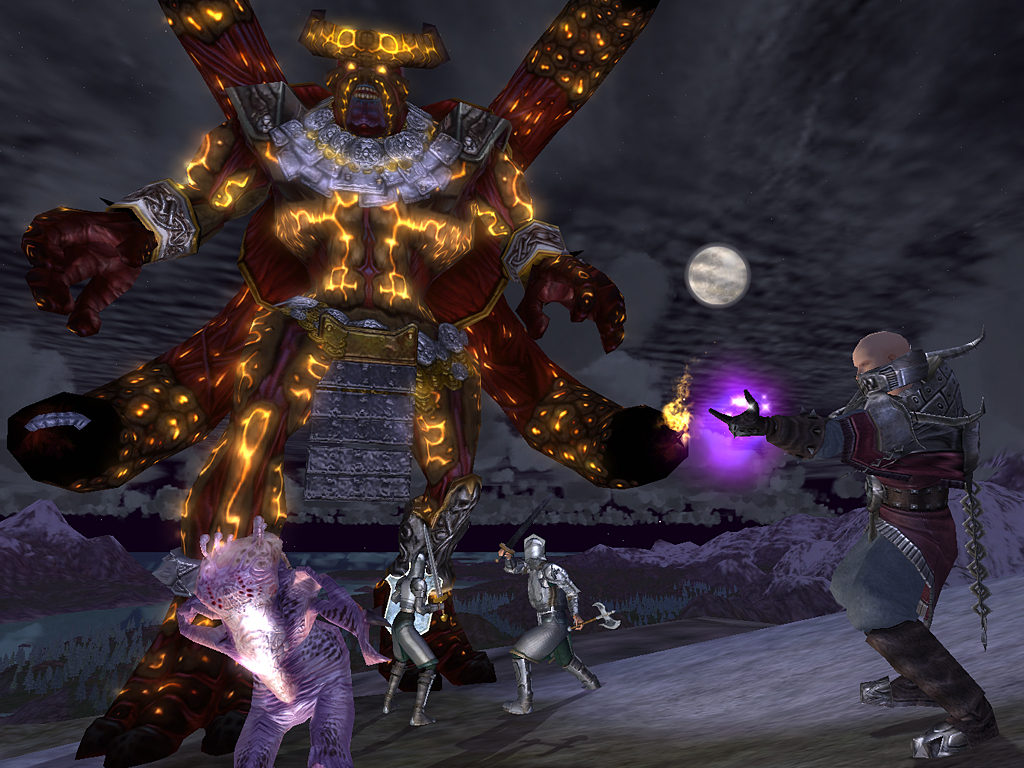
Battling a massive Fire Giant
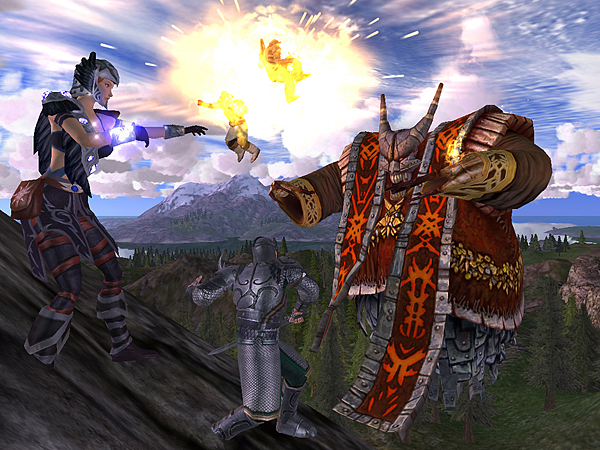
Stormwright and Warrior take on a Fire Giant Siege Caster
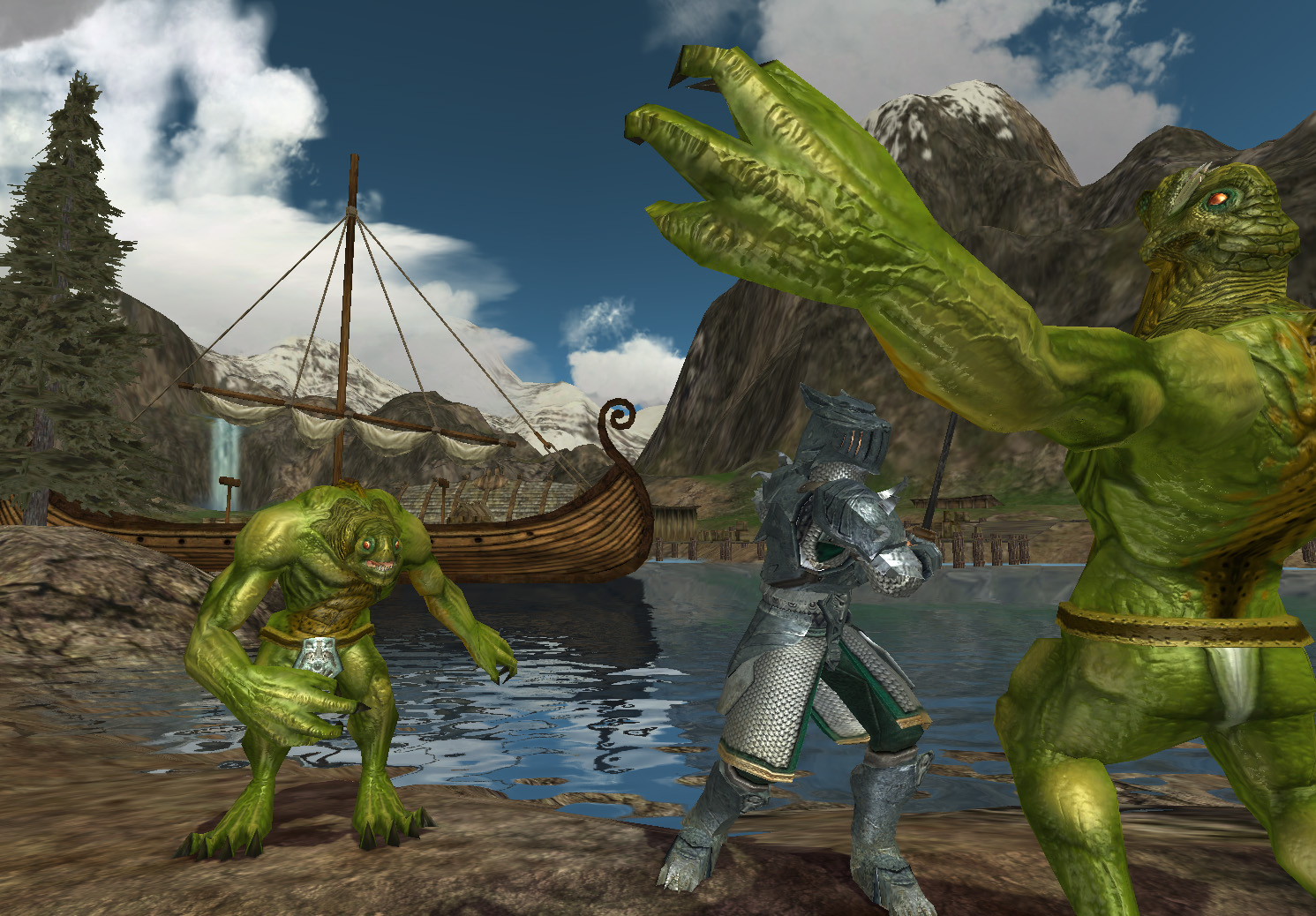
Up close and personal with a high level warrior
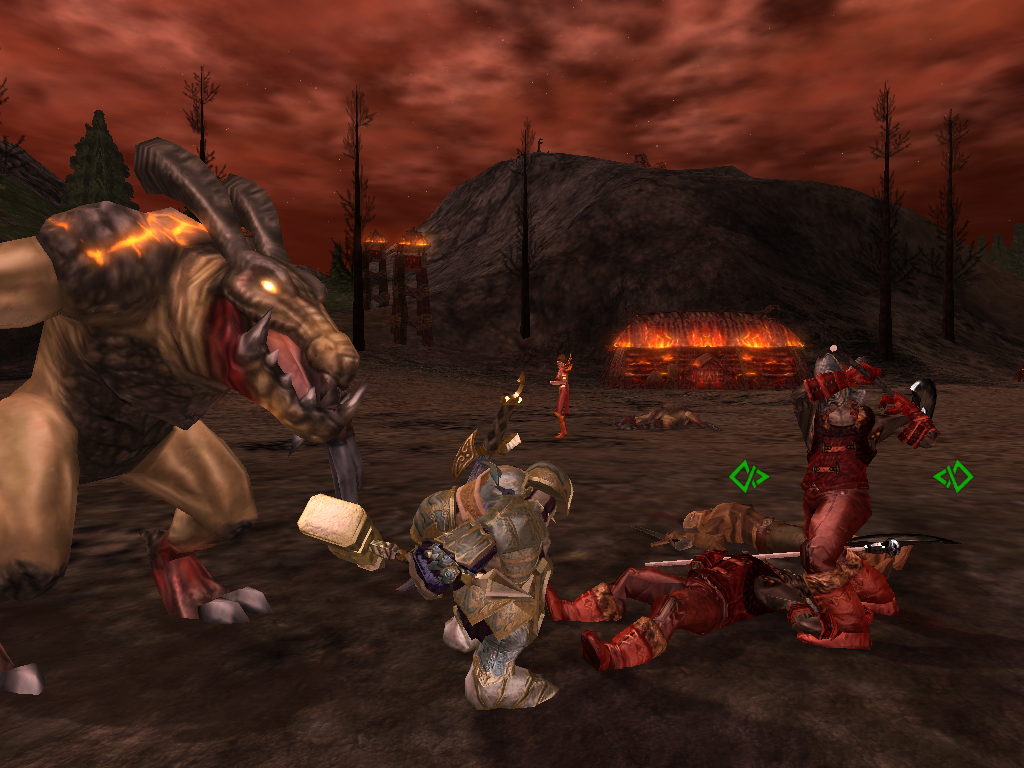
Creepers and Corruption are no match for this hero. Dwarf Smash!
To be honest, screenshots are great and everything but seeing the game in action is much better. The following link is a reprise of one of the quests we showed at E3 in 2003.
technical mumbojumbo
Mythica was graphically high-tech for it’s time but predated composite dynamic lighting models, ambient occlusion maps, or even tangent based normal maps. We essentially had an early version of a spherical harmonic light map, meaning we got a directional light vector for the dominant light source (either the sun or the moon as it tracked across the sky), an ambient omni-directional light value, and a bounce light value that pointed back at the sun/moon. Dynamic lights were costly and we used them very, very sparingly. Characters would cast shadows on the ground but not self-shadow, and because the light source moved we had no shadows from static objects. All models had the standard diffuse, specular, and normal maps, although our normal maps were painted height fields converted to normal data out of production considerations (this was pre-Zbrush or Mudbox). We also had a detail normal map that provided additional surface detail at close proximity. Most of the models in the game were under 2000 polygons, with high level heroes and boss monsters approaching twice that.
Mythica used a proprietary engine developed by the superbly talented programmers at Microsoft. Our dynamic weather system came from MS Flight Simulator, our water from Microsoft Research. The global lighting system was incredibly (possibly overly) complex, simulating atmospheric density and color distortion. The tech in the game was great, the art (if I do say so myself) was great, and the gameplay was really quite revolutionary for an MMO. We had, at most, a year left on the project but a change in business focus for MGS meant that we never got to finish. Mythica is still remembered annually on the lists of Best Games that Never Shipped.
art direction in action
Regardless of technological boon or limitation, Art Direction comes down to encouraging solid fundamentals: Legible silhouettes, dimensional volumes, excellent craftsmanship of painted textures, fluid animation, good light play on surfaces, and creating an evocative mood. I worked with artists daily to make sure output was of a high standard. I even submerged into environment lighting to ensure each realm really captured the proper tone.
I’ve mentioned that we had a fantastic concept art team, but the really impressive thing was how artists like John Shroades, Greg Onychuk, RK Post, Patrick Watje, and Adam Crockett were able to bring those monster concepts to life as 3D models. Leigh Kellogg and Gene Kohler nailed the outfits and character models, creating sexy and powerful heroes. Michael Cahill, Gene Kohler, Rob Johnson, Jim Millar, and Deanna McGahan built lush worlds for the action to take place. Steve Scott made incredible special effects (and he modeled and textured some great creatures as well). And the animation team (Robert Smiley, Mary K Omelina, and Theron Benson) created an incredible range of expressive and powerful motion, bringing everything to life. The team really captured all the excitement of the concepts and it was a tremendous honor to lead them.
E3 2007 interview with Corey Dangel. 9 minutes.


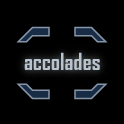

 Corey Dangel has been an Art Director for 15 years. He spent the last four years establishing the visual direction for The Agency, a critically anticipated title for PC and PS3. Prior to SOE, Corey spent nearly a dozen years living the life of an elite art director in the games division of Microsoft. Focused principally on online games, Corey spent his first tour of duty working on several groundbreaking titles including the Internet Gaming Zone, Fighter Ace, and Asherons Call. A two-year hiatus sent Corey to Cavedog/Humongous Entertainment where he helped bring the Total Annihilation franchise to the online world. A return to Microsoft had him working on a variety of PC and Xbox games, most notably Dungeon Siege, Psychonauts, and Mythica. Corey attended Western Washington University, where he graduated with a Bachelor of Science in Visual Communication. Outside of work, Corey pretends to be a rock star in his circularly referential band, AgentC. He makes a fine martini, too.
Corey Dangel has been an Art Director for 15 years. He spent the last four years establishing the visual direction for The Agency, a critically anticipated title for PC and PS3. Prior to SOE, Corey spent nearly a dozen years living the life of an elite art director in the games division of Microsoft. Focused principally on online games, Corey spent his first tour of duty working on several groundbreaking titles including the Internet Gaming Zone, Fighter Ace, and Asherons Call. A two-year hiatus sent Corey to Cavedog/Humongous Entertainment where he helped bring the Total Annihilation franchise to the online world. A return to Microsoft had him working on a variety of PC and Xbox games, most notably Dungeon Siege, Psychonauts, and Mythica. Corey attended Western Washington University, where he graduated with a Bachelor of Science in Visual Communication. Outside of work, Corey pretends to be a rock star in his circularly referential band, AgentC. He makes a fine martini, too.
